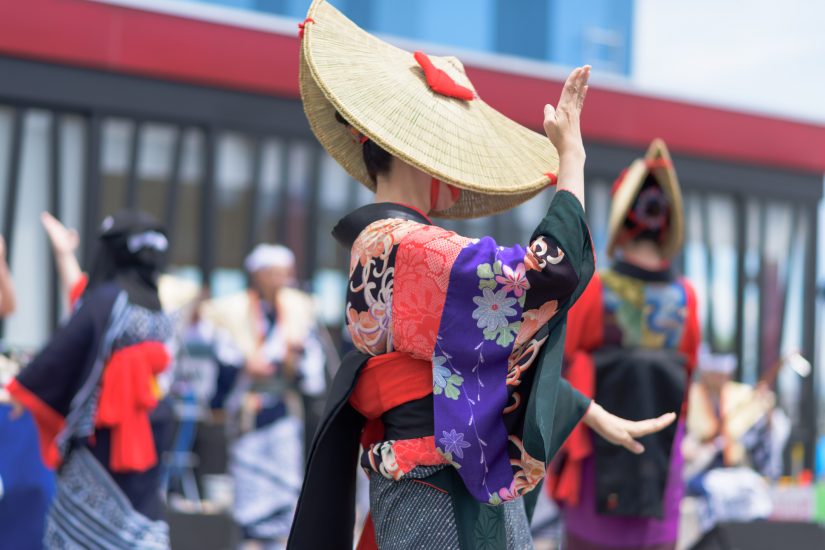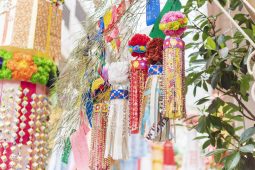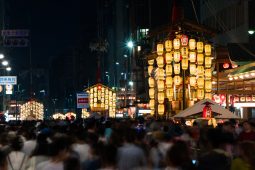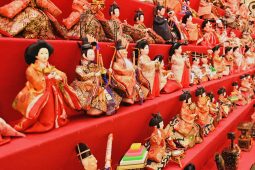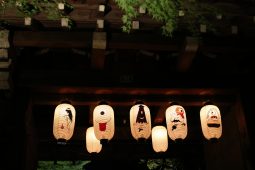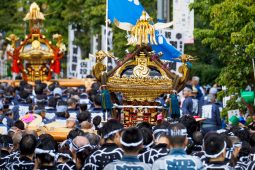Obon (お盆) is a Japanese Buddhist festival, held in the summer, during which people honor their ancestors and departed loved ones. It is believed that during Obon, the spirits of the dead revisit their families. Rather than being a dark or sinister event, this festival is a happy celebration of family unity and continuity, which is marked with fires, lanterns, family get-togethers, and a very special dance. There is much regional variation in how, and even when, Obon is celebrated, but most of the festivities have some common elements.
The main events of Obon are generally celebrated between August 13th and 15th. Although this is not an official national holiday, many shops and businesses will close during this period. It is also traditional for people to spend time with their families during Obon, so people working in big cities, such as Tokƒyo or Osaka, will often travel back to their home towns for the occasion. Because Obon is one of the main annual occasions when extended families are reunited, the highways, airports, and railway stations of Japan are especially busy at this time of year.
Traditionally, lanterns or small bonfires called mukaebi (迎え火 or “welcoming fires”) are lit on the first day of the festival to guide the spirits home. People will light incense, and leave flowers and food offerings at their family altars. Typically these offerings include their departed relatives’ favorite treats. Ohaka-mairi (お墓参り or “visit to the grave”) is another important custom when families visit their family tombs, clean them up, decorate them with flowers, and pray for the peaceful repose of the dead.
The next part of the festival is the Bon Odori (盆踊り or “Bon Dance”), a special folk dance, held in local communities throughout the country. Typically, people dressed in yukata (浴衣- a kind of light summer cotton kimono) dance in a circle around a high stage on which music is played and old songs are sung. The style of dance will differ from region to region. The Awa Odori Festival in Tokushima City in Shikoku, is a unique variant of the Bon Dance and probably the most famous folk dance event in Japan. Between the 12th and 15th of August thousands of dancers and musicians dressed in colorful costumes parade through the streets of Tokushima in an event that is believed to be around 400 years old. Today, the spectacle of the dancers moving in perfect harmony to the accompaniment of pipes, bells, and pounding drums has become a major tourist event attracting 1.3 million tourists each year.
On the last day of the Obon festival send-off fires called okuribi (送り火) are lit to guide the spirits back to the world of the dead. The most famous okuribi are the giant bonfires that are lit on five mountains around the city of Kyoto on August 16th. Three of the fires are in the shape of Chinese characters, with two more shaped like a ship and a sacred shrine gate. The most famous fire, and the first to be lit at 8.00 pm, is on Mount Daimonji. This fire is in the shape of the character 大 which is pronounced “Dai” and means “big”. Often this event is called simply Daimonji (大文字) after the biggest fire, but its official name is Gozan no Okuribi (五山送り火) which means “five mountain send-off fires”. During this event the city lights are lowered and people crowd to the best viewing spots in streets, parks, along the river banks, and on top of tall buildings.
Many local communities will also light a special kind of send-off fire called toro-nagashi (灯篭流し). These are floating paper lanterns with candles inside which are released onto rivers or the sea. Some communities will also accompany a toro-nagashi event with a fireworks display.
Although the most common time to celebrate Obon is mid-August, some communities celebrate Obon at different times. This is because Obon used to be celebrated in the 7th month of the old lunar calendar. For this reason some areas will have their own local celebration around the 15th of July.


